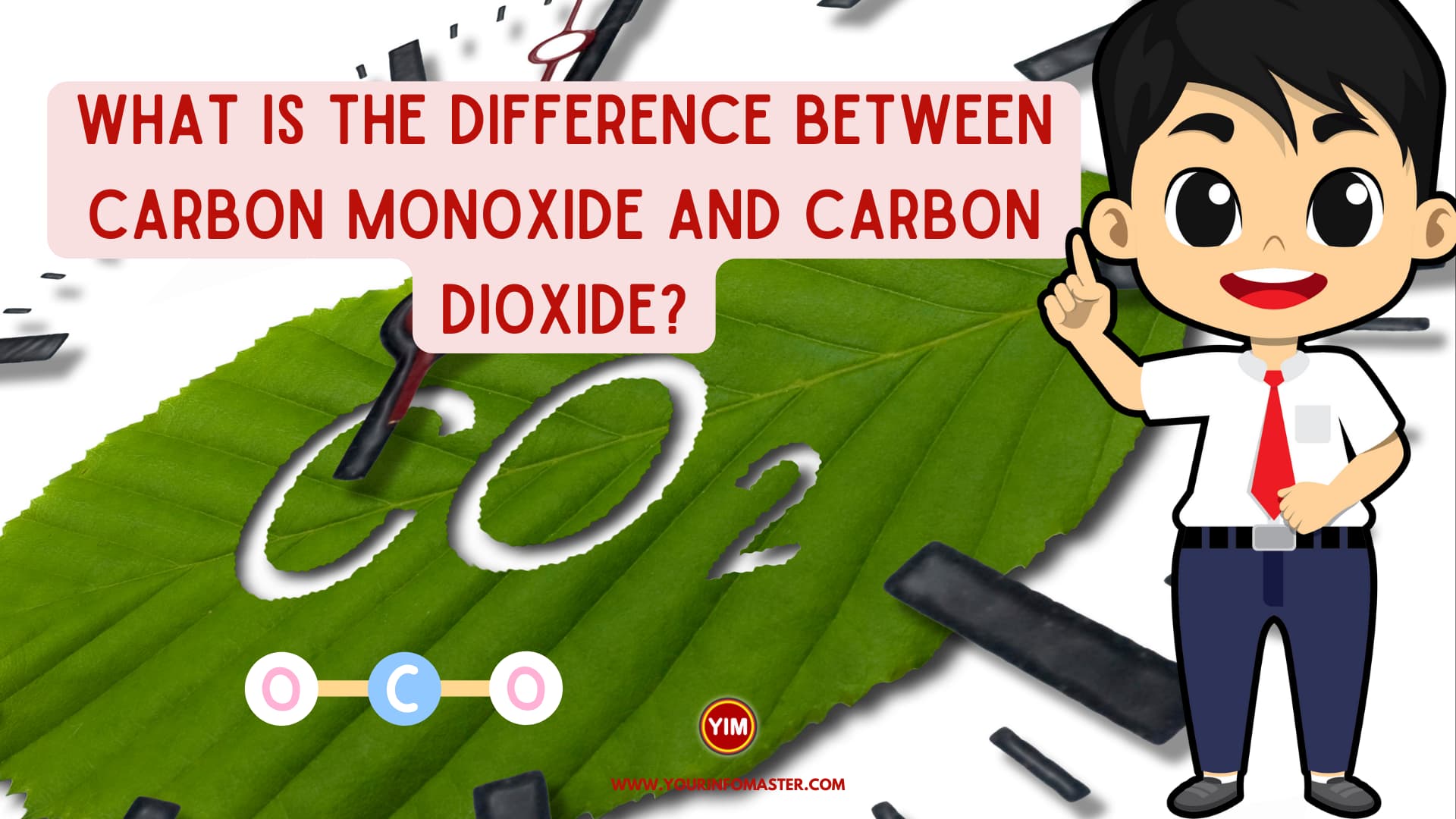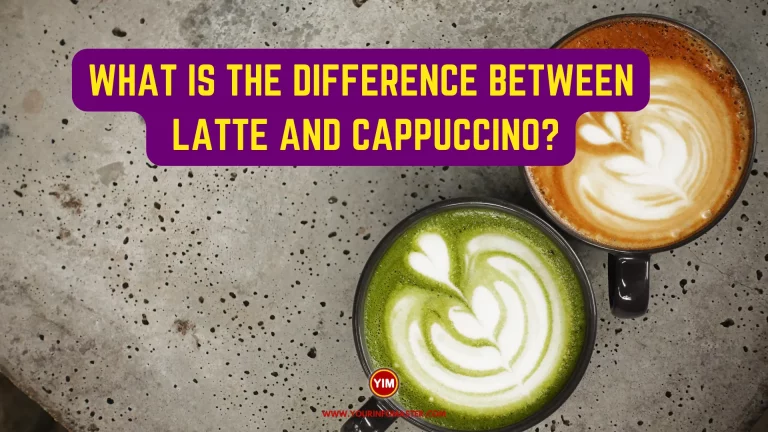I am going to explain the blog post “What is the difference between carbon monoxide and carbon dioxide?“
Carbon monoxide and carbon dioxide are two common gases that can be found in our daily lives. They are both byproducts of combustion, but despite their similarities, they have very different properties and effects on human health.
In this blog post, we will explore the differences between these two gases and how they compare to each other. We’ll also discuss the various ways in which these gases can impact our lives and how to test for them. So let’s dive into the fascinating world of carbon monoxide vs. carbon dioxide!
Check also: What is the difference between Greek yogurt and regular yogurt?
What is Carbon Monoxide?
Carbon monoxide (CO) is a colorless, odorless gas that can be extremely dangerous to human health. It is produced by the incomplete combustion of fuels such as gasoline, natural gas, propane, and wood. This means that any appliance or device that burns fuel in order to produce heat or power has the potential to create carbon monoxide.
When we inhale carbon monoxide, it enters our bloodstream and binds with hemoglobin in place of oxygen. This reduces the amount of oxygen available for vital organs like the brain and heart, leading to symptoms like headache, dizziness, confusion, and nausea. In high concentrations, carbon monoxide can even be fatal.
It’s important to note that even small amounts of CO exposure over a long period of time can also have serious health consequences. Symptoms may not show up until damage has already been done.
Because CO is invisible and odorless, it’s crucial to install detectors in your home near sleeping areas as well as near sources of potential CO leaks such as furnaces or water heaters. Regular maintenance on these appliances can also prevent leaks from occurring in the first place.
Read also: What’s the difference between a bank and a credit union?
What is Carbon Dioxide?
Carbon dioxide (CO2) is a colorless, odorless gas that is naturally present in the Earth’s atmosphere. It makes up about 0.04% of the air we breathe and is produced through natural processes like respiration and volcanic eruptions.
In addition to its natural sources, carbon dioxide has also become a byproduct of human activities such as burning fossil fuels for energy production and transportation. The increase in atmospheric CO2 levels due to these activities has been linked to global climate change.
Carbon dioxide plays an important role in regulating the Earth’s temperature by trapping heat from the sun within the planet’s atmosphere. However, excessive amounts of CO2 can lead to negative consequences such as rising sea levels, increased temperatures, and changes in weather patterns.
Despite its potential drawbacks, carbon dioxide also has numerous practical applications including use as a refrigerant, fire extinguisher agent, and greenhouse gas for plant growth enhancement.
Understanding both the benefits and risks associated with carbon dioxide is crucial for making informed decisions about how best to manage this essential component of our atmosphere.
How do they Compare?
Carbon monoxide and carbon dioxide are both colorless, odorless gases that can be hazardous to human health in high concentrations. However, there are some key differences between the two.
One of the main differences is their chemical composition. Carbon monoxide consists of one carbon atom and one oxygen atom bonded together, while carbon dioxide consists of one carbon atom and two oxygen atoms bonded together.
Another difference is their sources. Carbon monoxide is typically produced by incomplete combustion processes such as burning fossil fuels or wood, while carbon dioxide is a natural byproduct of respiration in living organisms and also occurs through industrial processes like cement production.
Their effects on human health can also differ. High levels of exposure to both gases can cause headaches, dizziness, nausea or even death. However, prolonged exposure to low levels of CO can lead to chronic conditions such as heart disease or neurological damage; whereas excessive amounts of CO2 may cause breathing difficulties due to depletion of oxygen in enclosed spaces.
In terms of safety measures for each gas, detection devices are available for both but have different purposes: Carbon Monoxide detectors alert occupants when there’s a potentially dangerous level present; whereas monitoring CO2 emissions helps industries manage their environmental impact.
It’s important to understand the distinctions between these two compounds because they have very different impacts on our environment and personal safety.
Read also: What’s the difference between oxycodone and oxycontin?
Health Effects of CO vs. CO2
Carbon monoxide and carbon dioxide are two gases that can have a significant impact on human health. Carbon monoxide (CO) is an odorless, colorless gas that can be deadly in high concentrations. It is produced by incomplete combustion of fossil fuels such as gasoline, natural gas, propane, and oil. On the other hand, carbon dioxide (CO2) is a naturally occurring gas that we exhale when we breathe out.
Exposure to high levels of CO can cause symptoms such as headache, dizziness, nausea, confusion or loss of consciousness. In severe cases it may even lead to death. The reason for this is because CO binds with hemoglobin in the blood more easily than oxygen does which then reduces oxygen supply throughout your body.
Carbon dioxide exposure typically does not cause immediate health effects at low levels but long-term exposure at high levels could lead to various respiratory problems like asthma or chronic obstructive pulmonary disease (COPD).
Although both gases are harmful if exposed to dangerous levels over extended periods of time or frequently enough with no proper ventilation or safety measures taken before detection will worsen its effects on our bodies leading to serious illnesses and possibly death.
How to Test for Carbon Monoxide and Carbon Dioxide
Testing for carbon monoxide (CO) and carbon dioxide (CO2) is crucial in preventing exposure to these harmful gases. Fortunately, there are several ways to test for both gases.
For CO testing, you can use a portable detector or have a professional conduct an inspection using specialized equipment. Portable detectors work by measuring the amount of CO in the air and alerting you if levels become dangerous.
To test for CO2, you can use a simple colorimetric tube that changes color depending on the concentration of CO2 in the air. Another option is to use a handheld meter that measures the parts per million (ppm) of CO2 present.
It’s important to note that while both gases are often found together, they require different testing methods due to their unique properties. Carbon monoxide is odorless and colorless, making it difficult to detect without proper equipment. On the other hand, carbon dioxide has no odor but can cause symptoms like headaches and dizziness at high concentrations.
Regularly testing for both carbon monoxide and carbon dioxide should be part of any home safety plan as exposure to either gas can lead to serious health problems or even death if left undetected.
10 Differences between carbon monoxide and carbon dioxide
Here is a list of 10 differences between carbon monoxide and carbon dioxide:
- Chemical Formula
- Molecular Weight
- Molecular Structure
- Source of Production
- Color and Odor
- Toxicity
- Effects on the Environment
- Properties as a Greenhouse Gas
- Use in Industry
- Detection Methods
Check also: What does it mean to dream your teeth falling out?
Detail of 10 Differences between carbon monoxide and carbon dioxide
Here is the detail of 10 differences between carbon monoxide and carbon dioxide:
Chemical Formula: The chemical formula of carbon monoxide is CO, while the chemical formula of carbon dioxide is CO2. Carbon monoxide has one carbon atom and one oxygen atom, while carbon dioxide has one carbon atom and two oxygen atoms.
Molecular Weight: Carbon monoxide has a molecular weight of 28 g/mol, while carbon dioxide has a molecular weight of 44 g/mol. This means that carbon dioxide is denser than carbon monoxide.
Molecular Structure: Carbon monoxide is a linear molecule with a bond angle of 180 degrees, while carbon dioxide is a linear molecule with a bond angle of 120 degrees.
Source of Production: Carbon monoxide is primarily produced by the incomplete combustion of fossil fuels, while carbon dioxide is produced by respiration, combustion, and natural processes such as volcanic activity.
Color and Odor: Carbon monoxide is a colorless, odorless gas, while carbon dioxide is a colorless gas with a slightly acidic odor.
Toxicity: Carbon monoxide is highly toxic and can lead to severe health issues and even death. Carbon dioxide is not toxic, but it can cause suffocation in high concentrations.
Effects on the Environment: Carbon dioxide is a greenhouse gas that contributes to climate change, while carbon monoxide has a relatively short atmospheric lifetime and does not significantly contribute to climate change.
Properties as a Greenhouse Gas: Carbon dioxide is a potent greenhouse gas that traps heat in the Earth’s atmosphere and contributes to global warming. Carbon monoxide has a negligible effect on the Earth’s climate.
Use in Industry: Carbon monoxide is used in various industrial processes, such as the production of chemicals and fuel. Carbon dioxide is used in refrigeration, carbonation of beverages, and other industrial processes.
Detection Methods: Carbon monoxide can be detected using various sensors, such as electrochemical and infrared sensors. Carbon dioxide can be detected using infrared sensors.
Check also: What does it mean to dream with dogs?
Conclusion
In conclusion, carbon monoxide and carbon dioxide are two gases that have different chemical and physical properties. Carbon monoxide is a poisonous gas that is primarily produced by incomplete combustion, while carbon dioxide is a greenhouse gas that contributes to climate change.
Understanding the differences between these two gases is essential, as they have vastly different effects on our health and the environment. By knowing these differences, we can take steps to mitigate their negative impacts and ensure a healthier and more sustainable future.
See also: Quran Wallpapers Android App
If you really enjoyed the article “What is the difference between carbon monoxide and carbon dioxide?,” then I would be very grateful if you’d help it spread by emailing it to your friends or sharing it on Twitter, Instagram, or Facebook. Thank you!
Have you read “What is the difference between carbon monoxide and carbon dioxide?“ Which of these blogs are you reading, and how is it similar to one of them?







